Relationships 1st Edition David L. Weimer
Visit to download the full and correct content document: https://ebookmass.com/product/dog-economics-perspectives-on-our-canine-relations hips-1st-edition-david-l-weimer/
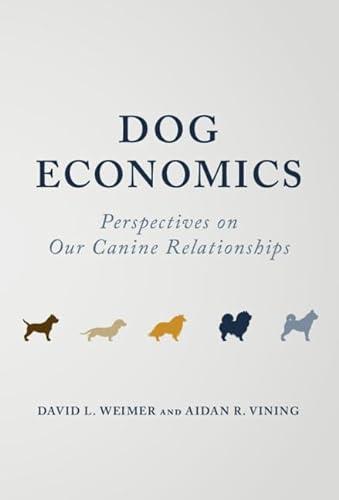
More products digital (pdf, epub, mobi) instant download maybe you interests ...
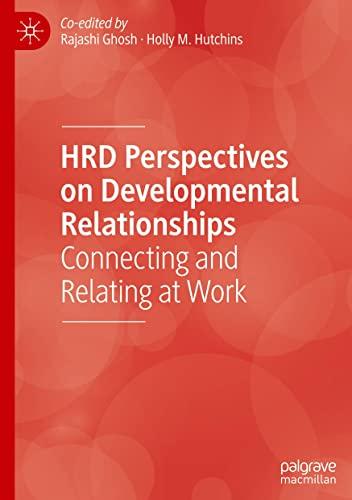
HRD Perspectives on Developmental Relationships: Connecting and Relating at Work Rajashi Ghosh
https://ebookmass.com/product/hrd-perspectives-on-developmentalrelationships-connecting-and-relating-at-work-rajashi-ghosh/

Bad Words: Philosophical Perspectives On Slurs David Sosa
https://ebookmass.com/product/bad-words-philosophicalperspectives-on-slurs-david-sosa/
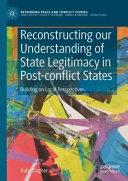
Reconstructing our Understanding of State Legitimacy in Post-conflict States : Building on Local Perspectives 1st Edition Ruby Dagher
https://ebookmass.com/product/reconstructing-our-understandingof-state-legitimacy-in-post-conflict-states-building-on-localperspectives-1st-edition-ruby-dagher/
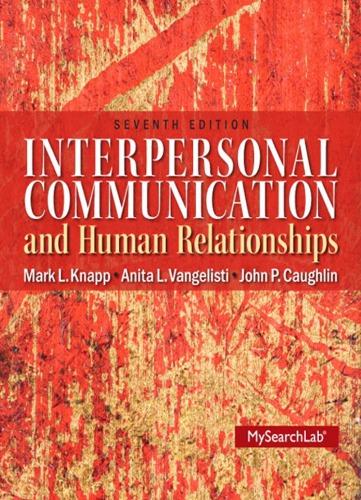
Interpersonal Communication & Human Relationships Mark L. Knapp
https://ebookmass.com/product/interpersonal-communication-humanrelationships-mark-l-knapp/
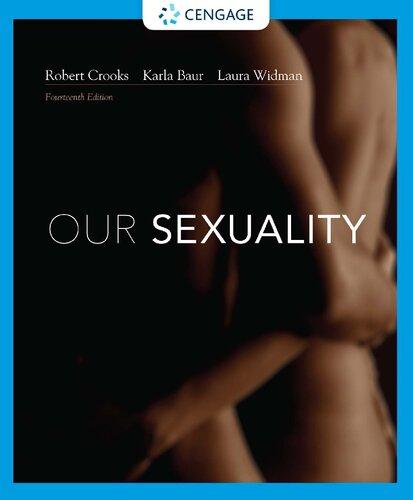
Our Sexuality 14th Edition Robert L. Crooks
https://ebookmass.com/product/our-sexuality-14th-edition-robertl-crooks/
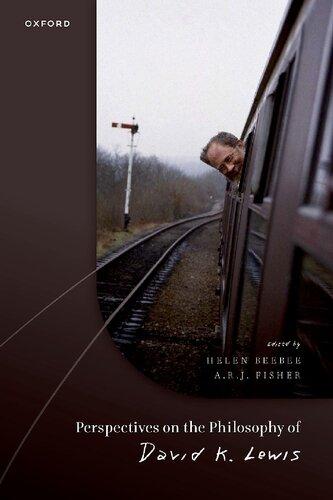
Perspectives on the Philosophy of David K. Lewis Helen Beebee (Editor)
https://ebookmass.com/product/perspectives-on-the-philosophy-ofdavid-k-lewis-helen-beebee-editor/
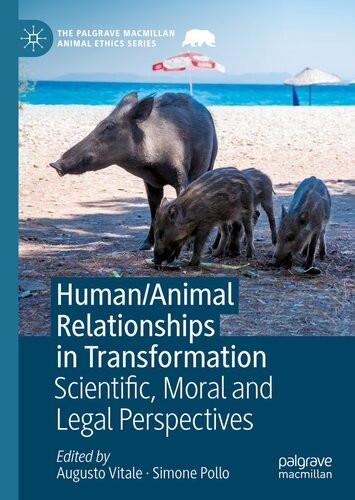
Human/Animal Relationships in Transformation: Scientific, Moral and Legal Perspectives 1st Edition Augusto Vitale
https://ebookmass.com/product/human-animal-relationships-intransformation-scientific-moral-and-legal-perspectives-1stedition-augusto-vitale/
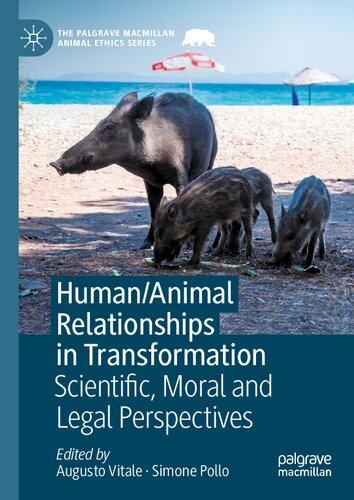
Human/Animal Relationships in Transformation: Scientific, Moral and Legal Perspectives 1st Edition Augusto Vitale
https://ebookmass.com/product/human-animal-relationships-intransformation-scientific-moral-and-legal-perspectives-1stedition-augusto-vitale-2/

The Last Dog on Earth Adrian J. Walker
https://ebookmass.com/product/the-last-dog-on-earth-adrian-jwalker/


Dog Economics
Archaeologists, anthropologists, and evolutionary biologists study the origins of our relationship with dogs and how it has evolved over time. Sociologists and legal scholars study the roles of dogs in the modern family. Veterinarian researchers address the relationship in the context of professional practice, yet economists have produced scant scholarship on the relationship between humans and dogs. Dog Economics applies economic concepts to relationships between people and dogs to inform our understanding of their domestication. It interprets their contemporary role as both property and family members and explores factors that affect the demand for dogs as well as market failures in the American puppy market. Offering economic perspectives on our varied relationships with dogs, this book assesses mortality risks and addresses end-of-life issues that commonly arise. It develops a framework for classifying canine occupations, considers the impact of pet insurance on euthanasia, and assesses the social value of guide dogs.
David L. Weimer is Fellow of the National Academy of Public Administration. His contributions to public policy scholarship have been widely recognized as he has received the Policy Field Distinguished Contribution Award from the Association for Public Policy Analysis and Management and the Outstanding Achievement Award from the Society for Benefit-Cost Analysis.
Aidan R. Vining is Emeritus CNABS Professor of Business and Government Relations, Simon Fraser University. He is a winner of the John Vanderkamp Prize (Canadian Economics Association) and the J. E. Hodgetts Award (Institute of Public Administration of Canada). He has published widely. His family fosters candidate dogs for guide training.
Dog Economics
Perspectives on Our Canine Relationships
DAVID L. WEIMER
University of Wisconsin–Madison
AIDAN R. VINING
Simon Fraser University

Shaftesbury Road, Cambridge CB 2 8EA , United Kingdom
One Liberty Plaza, 20th Floor, New York, NY 10006, USA
477 Williamstown Road, Port Melbourne, VIC 3207, Australia
314–321, 3rd Floor, Plot 3, Splendor Forum, Jasola District Centre, New Delhi – 110025, India
103 Penang Road, #05–06/07, Visioncrest Commercial, Singapore 238467
Cambridge University Press is part of Cambridge University Press & Assessment, a department of the University of Cambridge.
We share the University’s mission to contribute to society through the pursuit of education, learning and research at the highest international levels of excellence.
www.cambridge.org
Information on this title: www.cambridge.org/9781009445559
DOI : 10.1017/9781009445504
© David L. Weimer and Aidan R. Vining 2024
This publication is in copyright. Subject to statutory exception and to the provisions of relevant collective licensing agreements, no reproduction of any part may take place without the written permission of Cambridge University Press & Assessment.
First published 2024
A catalogue record for this publication is available from the British Library Library of Congress Cataloging-in-Publication Data
Names : Weimer, David L., author. | Vining, Aidan R., author.
Title : Dog economics : perspectives on our canine relationships / David L. Weimer, University of Wisconsin–Madison, Aidan R. Vining, Simon Fraser University.
Description : Cambridge, United Kingdom ; New York, NY : Cambridge University Press, 2024. | Includes bibliographical references and index.
Identifiers : LCCN 2023031358 | ISBN 9781009445559 (hardback) | ISBN 9781009445535 (paperback) | ISBN 9781009445504 (ebook)
Subjects : LCSH : Dogs – Economic aspects. | Dogs – Social aspects. | Economics – Psychological aspects. | Dog owners. | Human-animal relationships – Economic aspects.
Classification : LCC SF 426.2 .W 34 2024 | DDC 636.7–dc23/eng/20231026
LC record available at https://lccn.loc.gov/2023031358
ISBN 978-1-009-44555-9 Hardback
ISBN 978-1-009-44553-5 Paperback
Cambridge University Press & Assessment has no responsibility for the persistence or accuracy of URLs for external or third-party internet websites referred to in this publication and does not guarantee that any content on such websites is, or will remain, accurate or appropriate.
To all the dogs who enrich our lives and to all the humans who do their best for them.
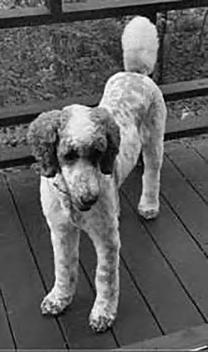


List of Figures page ix
List of Tables xi Preface xiii
1 Dogonomics: Homo Economicus versus Canem Amans 1
2 Chasing the Tale: Origins of the Human–Dog Relationship 13
3 Love Me, Love My Dog: The Demand for Dogs 35
4 How Much Is That Doggy in the Window? Supply, Information Asymmetry, and Negative Externality in the Dog Market 62
5 You Bet Your (Dog’s) Life: The Value of a Statistical Dog Life (VSDL) 85
6 A Doggone Shame: Hard Decisions about Euthanasia and Dogs’ Lives 113
7 Working for the Man: Canine Occupations 137
8 Dogonomics: Past, Present, and Future 175 Glossary of Economic Terms 189 Index
2.1 Hunting Game (prisoner’s dilemma): Single round and repeated page 21
2.2 Hawk–dove game with high costs of fighting (C > V) 27
2.3 Dogs as companions
2.4 Dogs as companions and productive resources
2.5 Human–dog cooperation from the human perspective
3.1 COVID shock to the supply and demand for dogs
4.1 Market for freeze-dried beef liver dog treats
4.2 Market for puppies: Information asymmetry
4.3 Market for puppies: Negative externality
5.1 Willingness to pay for reductions in mortality risk and the VSL
5.2 Basic mortality grid
5.3 Comparative mortality grids
6.1 Economic efficiency when the use of dogs in research imposes negative externalities
7.1 Trade-offs between selection and training costs
7.2 Annual costs and benefits of ESA exclusion
3.1 Multiple dog roles reported by owners page 38
3.2 Positive aspects of pet ownership 39
3.3 Pet dogs as family members 40
3.4 Gendered roles in dog care in households with two or more adults 43
4.1 Types of puppy supplier and market failures 72
4.2 Spaying/neutering as a function of income 80
5.1 Initial estimates of mean WTP and the VSDL 106
5.2 VSDL estimates under alternative technical assumptions 107
6.1 Fiduciary responsibilities in property rights regimes for dog euthanasia 117
6.2 Dog owners who would consider euthanasia of a suffering pet 120
7.1 Absolute and comparative advantages in international trade 140
7.2 Classification of canine occupations in terms of advantage and training 153
Preface
We like dogs. One of your authors grew up in a family with a dog but then went dogless until the COVID pandemic. Your other author has had many dogs in his family over the years, usually a couple of permanent residents as well as many fostered dogs, both in preparation for training as guide or assistance dogs and as rescues from unfortunate circumstances. We rarely pass up an opportunity to pet (or spoil) someone else’s dog.
For nearly forty years, we have collaborated on public policy scholarship and continue to do so. Most of this work involves applying economic concepts to help inform policy analysis or to address emerging issues in organizational design. We invariably find economic concepts to be useful in helping to frame public policy issues and in predicting the consequences of alternative policies. These concepts are almost always valuable in getting started though rarely sufficient for completing public policy analyses. We aspire to bring this same approach to dogonomics: that is, to showing how economic perspectives help us better understand the place of dogs in contemporary American society. Of course, economics does not provide anything like the full story. Consequently, although we set ourselves the task of applying economic concepts throughout the book, we try to take full advantage of the research done by numerous other disciplines and perspectives on all aspects of interactions between our species.
The story of the origin of this book begins with an aside from an economist at the Food and Drug Administration who was responsible for organizing a cost–benefit analysis to support new rules that sought to make pet food safer. He mentioned to one of us that although estimates
Preface
of the value of a (human) statistical life are widely available to monetize changes in human mortality risk, no comparable value was then available for dogs. One of your authors eventually organized a team of former students to estimate the value of statistical life for pet dogs using a type of survey experiment developed by environmental economists called contingent valuation. Not only was the project very enjoyable for the team, but, at least by academic standards, the resulting publication attracted considerable public attention. Chad Zimmerman also thought the economics of dogs might attract an audience. He suggested that we write a book about it. As we had not previously thought of writing such a book, this is that rare case for which the assertion that “this book would not have been written without you” is literally true. Thank you, Chad.
Our aim was to write this book to be accessible to noneconomists, so we sought to explain economic concepts as clearly as possible. We use only a small number of straightforward diagrams to convey concepts, and we present empirical results without dragging readers through complicated statistical analyses. Anyone who has taken an introductory course in economics should find all the material immediately accessible. The glossary of key terms should enable those readers without prior exposure to economics also to navigate through with only occasional detours. Thus, readers who are fond of dogs should find this book accessible, as well as interesting.
We also see some potential use of this book for instructional purposes. About half of U.S. households now have dogs. If economists are like the general population, probably an heroic assumption, then perhaps half of the instructors of introductory and intermediate economics courses own dogs. They and many of their students would find this to be a fun supplementary text – dogs are more interesting than widgets! We also hope that economists with dogs might decide that it would be both useful and fun to contribute to the field of dogonomics.
Our application of economics to understanding the human–dog relationship draws on research from biologists, psychologists, legal scholars, philosophers, historians, and veterinary medicine researchers from around the world, but especially in the United States, United Kingdom, Australia, and Canada. We hope that scholars who work in these areas will find our references helpful for putting their own work in broader context. We think that this book would be especially interesting and useful for veterinary students and others whose research involves dogs.
A number of people have contributed to this project in various ways. Carol Silva, Hank Jenkins-Smith, Deven Carlson, Simon Haeder, and
Preface
Joseph Ripberger collaborated on the research project to estimate the value of statistical dog life that served as what turned out to be the initial step toward this book. Levi Bankston helped us identify relevant surveys. We also thank W. Kip Viscusi, Glenn Blomquist, Mariel Barnes, Stéphane Lavertu, Melanie Manion, Jerry Mitchell, and Ulrike Radermacher for their comments and encouragement. Robert Dreesen was encouraging and suggested a valuable expansion. Sable Gravesandy, Claire Sissen and Swati Kumari helped move the project smoothly to publication. As always, we bear responsibility for any errors and all interpretations in this book.
1
Dogonomics
Homo Economicus versus Canem Amans
Suddenly Angus knew what he must do. The decision was made without any real thought, without any consideration of counter-arguments, or even practicalities. And Angus rationalized this to himself, thinking that if everybody thought too much about whether or not to have a dog, then nobody would ever have one. There were good reasons to have a dog, but there were so many equally good reasons not to have one, and if people ever engaged in any calculation of benefit and convenience there would be no place for dogs in our lives. But that was not the way it was; people took on dogs out of love, without questioning whether it was the right time or the right place for love. Love simply took over and prompted one to act there and then. That was how dogs were taken into our lives; in that spirit of spontaneous affection, and not because we had considered and approved their case. Their case was messy and inconvenient and demanding and yet we did it; we took on dogs, as Angus now did with this puppy on its lead and its two unrealistic young owners.
– Alexander McCall Smith, The Peppermint Tea Chronicles (New York: Anchor Books, 2019), p. 294.
Angus, whose dog Cyril sports a gold tooth and dreams of biting ankles, recognizes the affection and attachment the two boys already have for the puppy that they have been hiding from their parents. His musing raises the big question of why people choose to own dogs despite the substantial costs of doing so.1 The costs of owning dogs accrue directly as expenditures for food and necessary veterinary care, but also in terms of what economists
1 Throughout this book, we use the terminology of ownership, which is consistent with both law and economic convention. We recognize, however, that some people object to the idea of owning another sentient being, an objection that we address in Chapter 6.
call opportunity costs. 2 These opportunity costs include such things as the value of time spent providing care and the loss of flexibility in schedules, travel, where one can live, and even romantic partners. Angus, as do many of us, sees this love of dogs as swamping consideration of these costs. What would economists make of Angus’s calculus? Before answering this question, we note that two schools of economics, once antagonistic but now fairly well integrated, dominate contemporary economics. Neoclassical economics assumes individual rationality in the sense that people make the best possible choices to promote their own interests. Neoclassical economics considers behavior to be rational if it promotes the wellbeing of the individual. It is more precisely labeled instrumental rationality in that it deals only with the means people follow and not the ends they seek. Neoclassical economics is agnostic about the rationality of ends, requiring only that they be based on coherent preferences.
Behavioral economics, however, recognizes that people sometimes make decisions that neoclassicists would simply consider to be mistakes. Rather than assuming perfect rationality, behavioral economists consider a range of ways that people fail to make value-maximizing decisions. Behavioral economics generally considers failures of instrumental rationality but also considers situations in which preferences may not be coherent. For purposes of understanding peoples’ relationships with dogs, neoclassical economics requires a fully rational assessment of costs and benefits in decisions about dog ownership while behavioral economics allows for decisions made with misperceptions of these costs and benefits.
Many neoclassical economists might respond to Angus by explaining the choice to adopt or keep a dog as being based on a rational calculation in which the anticipated benefits of doing so, somehow, exceed the costs. Thus, rather than labeling these benefits as love, they would frame them in terms of the various services that dogs provide, such as companionship or protection. In contrast, rather than assuming perfect rationality, behavioral economists would consider a range of ways that people fail to make value-maximizing decisions about dog ownership. For example, in adoption decisions, people may well underestimate the costs and risks of owning a dog, overestimate the benefits of ownership, or simply be distracted by the ancillary cuteness of puppies. An important contribution to the theory of behavioral economics sees ancillary factors, such as cuteness during puppyhood, as influencing decisions (adopting) but not relevant to the utility (satisfaction) that will actually be realized (living
2 The Glossary provides definitions or explanations of italicized economic terms.
with the adult dog).3 Once we have dogs, a behavioral consequence – the endowment effect – may well stop us from rationally assessing the benefits and costs of continued ownership: once one has a dog, one perceives costs and benefits of ownership differently than one would before one has the dog. Despite their other differences, however, both neo-classicists and behaviorists would probably relegate love to the error term in their models along with any unmeasured or putatively unmeasurable services provided by dogs. That is, if one were to statistically model the decision to own a dog as a function of observable costs and benefits for individuals, there would be some errors attributable to the exclusion of any relevant cost or benefit from the model. As economists do not have a way of measuring love, its effect would be realized as error. In other words, as Tina Turner sang, “What’s love got to do with it.”
In this book, we consider, and assess as best we can, how much of human behaviors involving dogs can be explained by economic theory writ large. That is, we seek to determine how much of our love for dogs can be understood as economically rational behavior, whether neoclassically perfect or behaviorally imperfect. So, we characterize decisions about dogs as choices involving trade-offs as in most other choices we make in our lives. We take the liberty of calling this project dogonomics.
One might ask why we focus particularly on the relationship between people and dogs? Well, for a start, the large scale of the market for petrelated goods and services means it is economically important, in terms of expenditures of both money and time.4 In 2021, U.S. consumers spent $123.6 billion on pet products. The approximately half of households that own dogs are responsible for much of this spending. Dogs are the most frequently kept pet. Some people face substantial upfront costs when they purchase dogs from breeders. In terms of ongoing expenditures, annual averages for dogs in the United States include $458 for surgical veterinary visits, $242 for routine veterinary visits, $287 for food, $81 for food treats, $228 for kennel boarding, $81 for vitamins, $47 for grooming aids, and $56 for toys for a total of $1,480.5 Beyond this recurring spending, some dog caregivers are willing to make exceptionally
3 On ancillary factors, see B. Douglas Bernheim and Antonio Rangel. “Toward ChoiceTheoretic Foundations for Behavioral Welfare Economics.” American Economic Review 97, no. 2 (2007): 464–470.
4 Andrew Van Dam and Alyssa Fowers. “Who Spends the Most Time (and Money) on Pets?” Data Department, Washington Post, December 30 (2022).
5 2021–2022 APPA National Pet Owners Survey as reported by the APPA. www .americanpetproducts.org/press_industrytrends.asp. The comparable total amount for cats is $902. Accessed November 4, 2022.
large expenditures for veterinary care for very ill or injured dogs.6 In addition to direct expenditures, many owners now purchase insurance to reduce the risk of having to pay for costly veterinary services. Beyond costs borne directly by dog owners, municipalities also bear costs, usually passing along the costs of licensing to owners through fees but increasingly passing along the costs of dog parks to taxpayers.7 Further, the care and feeding of dogs increases our carbon footprint.8 Thus, dog ownership, and related activities, such as the training of guide and therapy dogs, involve considerable economic activity.
In modern societies, morality and law prohibit the commodification of children or parents or other persons in a dependent position. However, dogs (and we probably must admit cats)9 often have an unusual dual status as both commodities and what can best be described as family members.10 That is, many people make economic decisions about obtaining and owning dogs as if they were members of the family. Indeed, some experimental evidence suggests that, similar to parental spending on children, spending on pets makes people happier than spending on themselves.11 However, our canine household members can be legally bought, sold, and disposed of subject to only minimal restrictions.12 The economics of the family has been a vibrant area of economic and policy scholarship. This field encompasses many important subjects, such as the allocation of time by parents and the degree of utility interdependence
6 For example, a survey experiment found that, on average people would be willing to pay over $4 thousand for life-saving surgery for their dog, with some willing to pay much larger amounts. Colleen P. Kirk, “Dogs Have Masters, Cats Have Staff: Consumers’ Psychological Ownership and Their Economic Valuation of Pets.” Journal of Business Research 99, June (2019): 306–318.
7 Edwin Gómez and Ron Malega. “Dog Park Use: Perceived Benefits, Park Proximity, and Individual and Neighborhood Effects.” Journal of Leisure Research 51, no. 3 (2020): 287–307.
8 Nives Dolsak and Aseem Prakash. “Dogs Are Humans’ Best Friends: Could We Reduce Their Carbon Footprint?” Forbes, April 9, 2023.
9 For an engaging discussion of both cats and dogs as more than commodities, see David Grimm. Citizen Canine: Our Evolving Relationship with Cats and Dogs (New York, NY: PublicAffairs, 2014).
10 On the factors that have led an increasingly high percentage of U.S. families viewing pets as family members, see Anrea Laurent-Simpson. Just Like Family: How Companion Animals Joined the Household (New York, NY: New York University Press, 2021).
11 Michael W. White, Nazia Khan, Jennifer S. Deren, Jessica J. Sim, and Elizabeth A. Majka. “Give a Dog a Bone: Spending Money on Pets Promotes Happiness.” Journal of Positive Psychology 17, no. 4 (2022): 589–595.
12 One of our teachers in graduate school, a neoclassical economist with missionary zeal, finally touched off a revolt in our policy analysis course when he proposed modeling children as consumer durables without allowable disposal.
among family members.13 How does the role of dogs within the family fit within the economic models of the family? Or does it require some other, or at least expanded, framework? The perspective we present in this book is that, regardless of whether dog owners embrace their dogs as members of the family, almost all owners would consider them to be unlike any other commodity.
Beyond their economic significance and unique status as both commodity and family member, a growing body of research documents the impacts of dogs on human health. These impacts, collectively referred to as zooeyia, include a range of health benefits and health risks that dogs bestow on their owners. They give dogs’ relevance to public health.
Zooeyiatic impacts manifest through a variety of mechanisms.14 Petting and grooming dogs provides tactile simulation, increasingly seen as important for human wellbeing,15 Dogs’ demands for walks almost certainly increase the frequency and quality of their owners’ outdoor exercise. Dogs out and about on walks and runs often attract the attention of other dog owners or people who would like to be dog owners. As we are prone to do so, we can elevate this to a social science insight by noting that walking a dog may increase the owner’s stock of social capital by prompting contact with neighbors and fellow dog park users that would otherwise not occur. The evidence suggests that the companionship provided by dogs may also have psychological benefits beyond the enjoyment of shared time; contact with dogs may even contribute to the development of the immune system in the children of their owners. Of course, there may also be health risks to being around dogs, such as bites,16 allergic reactions, injuries from rambunctious dogs pulling on their leash, and the negative psychological effects on owners of dogs suffering injuries, illnesses, or death.
Aside from scholarly motives for seeking to understand the economics of owning dogs, we have a personal motivation: we are quite fond of
13 Gary S. Becker. “On the Relevance of the New Economics of the Family.” American Economic Review 64, no. 2 (1974): 317–319.
14 Kate Hodgson, Luisa Barton, Marcia Darling, Viola Antao, Florence A. Kim, and Alan Monavvari. “Pets’ Impact on Your Patients’ Health: Leveraging Benefits and Mitigating Risk.” Journal of the American Board of Family Medicine 28, no. 4 (2015): 526–534.
15 Nancy R. Gee, Kerri E. Rodriguez, Aubrey H. Fine, and Janet P. Trammell. “Dogs Supporting Human Health and Well-Being: A Biopsychosocial Approach.” Frontiers in Veterinary Science 8, March (2021): 1–11.
16 The Insurance Information Institute estimates that in 2021 U.S. insurers paid out $882 million in damage claims from dog bites. www.iii.org/article/spotlight-on-dogbite-liability. Accessed November 3, 2022.
dogs. We are fond of our current dogs and have happy memories of our departed dogs that we brought into our families (as well as those that managed to wheedle their way in).17 We are also sympathetic to most of the dogs we encounter on the street or in dog parks. We even sometimes fall victim to click bait that is dog-themed. Thus, beyond the professorial satisfaction of contributing to what we hope will be considered scholarship, we enjoy studying the essential ingredient of dogonomics – dogs!
Our effort to develop the field of dogonomics gives us considerable leeway as to the choice of topics. We selected six topics that we think will be substantively interesting to dog owners, intellectually interesting to applied economists, pedagogically valuable for economics students, and perhaps useful for policy makers. We do not seek to break new theoretical ground, but rather to explore how some familiar, and some less familiar, economic models help us understand the relationship between humans and dogs. We write for a general audience, so we seek to explain economic concepts clearly and avoid unnecessary jargon. As public policy researchers, we find economic theories and concepts to be very useful, indeed crucial, to our understanding of policy-relevant problems. However, in view of the novelty of dogonomics, we approach our topics with a somewhat open mind about the usefulness of economic theory for understanding the relationship between people and dogs.
Most broadly, we seek to use economic concepts to place the role of dogs as human companions and coproducers of goods and services in a larger social, and indeed cultural, context. To do so we draw on the most fundamental microeconomic idea, the market for dogs, which involves interesting heterogeneity in both supply and demand. The dog market – more accurately the various markets for dogs – has myriad impacts that spill over to the rest of society, or what economists refer to as external effects. We also seek to place the human–dog interaction in an even broader context of the economics of the evolution of both species in geologic time and individual relationships in dog-life time. This requires exploring some topics that many readers may not realize now fall within the imperialistic grasp of economists, such as the evolution of species (the domain of evolutionary biologists) and the meaning of property and personhood (the domain of philosophers, ethicists, and legal scholars).
17 In the interests of full disclosure, Ming (a parti standard poodle) resides with the family of one of your authors. Tazzy (Labrador retriever who produces puppies to be candidate guide dogs), Matilda (a mini dachshund) and Luis (a Palm Desert rescue of some kind) resides with the other author’s family.
We note three limitations inherent in our current pursuit of dogonomics. First, economics considers only human behavior and human welfare. This speciesism is unproblematic for our primary task of understanding how people interact with dogs. However, it has relevance for how we assess the welfare of alternative public policies affecting dogs. The normative contribution of economics is its protocols for assessing the relative efficiency of alternative policies in terms of their net benefit, the difference between their aggregate benefits and costs to people. The welfare of dogs only comes into play in the assessment of economic efficiency through the values people place on it. Contributions to humane societies clearly show a willingness of people to sacrifice consumption of goods for better treatment of animals. However, these contributions grossly underestimate the total value people place on better treatment because of the incentive to “free ride” on the contributions of others.
Maximizing economic efficiency does not necessarily correspond to the utilitarian principle of promoting the greatest happiness for the greatest number of people, not just because it ignores the distribution of consumption, but also because other values beyond consumption may be relevant to choosing good public policies. So, for example, some people may perversely get pleasure from treating dogs cruelly, but a large majority of people now recognize dogs as sentient beings deserving of respect. Thus, even without embracing the argument that the utilitarian principle requires us to consider the happiness of dogs in all our decisions,18 most people now see preventing cruelty to dogs as good public policy. Thus, as is generally the case, good policy analysis requires the consideration of a full range of values, usually including economic efficiency, but rarely limited to it.19
Second, we focus almost exclusively on U.S. public policies relevant to the welfare of dogs. We do so not because of a lack of policy-relevant research from other countries – much relevant research originates in the United Kingdom, Australia, and many other countries. We also do not believe that “American exceptionalism” requires us to consider the United States as a special case. Rather, we believe that understanding
18 The seminal argument for including animals in application of the utilitarian principle, is Peter Singer. Animal Liberation (New York, NY: Avon Books, 1975). For an overview of competing philosophical frameworks for considering the welfare of animals, see Matthew Calarco. Thinking Through Animals: Identity, Difference, Indistinction (Stanford, CA: Stanford University Press, 2015).
19 David L. Weimer and Aidan R. Vining. Policy Analysis: Concepts and Practice, 6th ed. (New York, NY: Routledge, 2017).
public policy requires familiarity with the formal and informal organizations that shape it.
Third, we do plead guilty to “dog exceptionalism,” a belief that the human relationship with dogs is qualitatively different than the human relationship with other animals. As the first domesticated animal, they have the longest shared history with humans. In addition to being the most common American pet, they perform both ancient functions, like guarding and herding, and contemporary ones, like assisting the disabled. Certainly, people can establish emotional bonds with other animals, most often cats and horses. However, the integration of these animals into our contemporary lives falls short of that of our dogs. Note that our dog exceptionalism differs from claims of exceptional intelligence, so-called canine exceptionalism, but rather on their ubiquitous presence in the lives of so many Americans. We would welcome economic interpretation of human relationships with other animals – catonomics anyone?
As biologists, archaeologists, and anthropologists are teaching us, people and dogs share a long history. A convergence of evidence from the Bonn-Oberkassel site in Germany shows domestication occurred at least 14 thousand years ago, and based on older fossil evidence, perhaps longer than 30 thousand years ago.20 Explanations for domestication vary, ranging from the role of dogs as hunting partners and camp guards to dogs as a reserve food source.
Chapter 2 overviews the wide-ranging scientific research on the origins of the domestication of dogs and considers the extent to which economic perspectives, specifically classical and evolutionary game theories, contribute to an understanding of domestication as mutualistic symbiosis. In this context, economics becomes relevant through the lenses of an interspecies division of labor.21 A hypothesis of mutual symbiosis inevitably raises a more provocative question: To what extent did dogs domesticate us? Moving beyond the initiation of domestication, we explore the idea that the economic model of goods that have both consumption and
20 Olaf Thalmann, Beth Shapiro, Pin Cui, Verena J. Schuenemann, Susanna K. Sawyer, D. L. Greenfield, Mietje B. Germonpré, M. V. Sablin, F. López-Giráldez, X. DomingoRoura, and H. Napierala. “Complete Mitochondrial Genomes of Ancient Canids Suggest a European Origin of Domestic Dogs.” Science 342, no. 6160 (2013): 871–874. For a broad overview of the field, see Darcy F. Morey. Dogs: Domestication and the Development of a Social Bond (New York, NY: Cambridge University Press, 2010).
21 Yu Uchiumi and Akira Sasaki. “Evolution of Division of Labour in Mutualistic Symbiosis.” Proceedings of the Royal Society B 287, no. 1930 (2020): 1–10.
production values helps us understand the forces that propelled it in early human societies.
Subsequent chapters shift our focus from the natural history of the interspecies relationship between humans and dogs that developed over the thousands of years during which dogs emerged as a separate species from wolves to the contemporary relationship. In Chapter 3, we turn to the many decisions that people make about the acquisition and owning of dogs. We do so primarily in the context of dogs’ roles in contemporary American families. Some dogs have tasks, such as participating in hunting, herding, guiding, competitive showing, law enforcement, and guarding – dogs also increasingly contribute to disease detection.22 But the overwhelming majority of dogs in the United States primarily provide companionship for the families that adopt them. Indeed, most families state that they consider their dogs to be family members. Do economic models of the family shed any light on dog ownership, such as the distribution of dog-care tasks among household members? Chapter 3 also considers why some people decide to become dog owners and the factors that affect their choice of breeds and specific dogs. Both behavioral economics and models of fads shed some light on these questions. We conclude our discussion of the demand for dogs by illustrating how simple market analysis can help us understand the jump in dog ownership that emerged during the COVID pandemic.
Chapter 4 focuses on the supply side of the market. We recognize the diversity of suppliers of puppies to the market, so we characterize different types of suppliers, ranging from high-quality breeders to socalled puppy mills. From an economic perspective, each of these types of supply exhibit different levels of two market failures that result in the puppy market not being allocatively efficient. One of the market failures, information asymmetry, occurs because buyers of puppies have less information about their “quality” than do those raising them, resulting in buyers purchasing too many or the wrong puppies. The other market failure, negative externality, occurs because some puppy suppliers do not bear the full costs of producing puppies, resulting in overproduction of puppies that eventually contributes to the hundreds of thousand dogs euthanized each year in shelters.
Public policies that are intended to improve the lot of humans sometimes affect dogs as well. For example, Congress has given the Food and
22 Biagio D’Aniello, Claudia Pinelli, Mario Varcamonti, Marcello Rendine, Pietro Lombardi, and Anna Scandurra. “COVID Sniffer Dogs: Technical and Ethical Concerns.” Frontiers in Veterinary Science 8, June (2021): 662–667.
Drug Administration quite extensive authority to regulate the content of pet food. As we explain in Chapter 5, this authority followed on the deaths of dogs and cats from imported ingredients adulterated with melamine.23 We consider how to value – and shadow price – reductions in mortality risk for dogs that are expected to result from proposed regulations. Federal regulators routinely use empirically based estimates of the value of statistical life in assessing the benefits to people of proposed health and safety regulations. These estimates are inferred from tradeoffs people make between money and mortality risk, either as revealed by their actions or elicited through surveys. We present the results of a survey experiment that allows estimation of the monetary value owners implicitly place on their dogs when they assess trade-offs between money and changes in their dogs’ mortality risk. In other words, it provides an estimate of the value of statistical dog life that can be used like the value of statistical life in estimating the net benefits of proposed policies and perhaps to help courts more fairly compensate owners for the wrongful deaths of their dogs.
Sadly, our longer lifespan often requires us to confront the death of our dogs. Chapter 6 sets out a property rights framework that helps elucidate how decisions about human and canine end-of-life decisions differ. People often express a preference for palliative over heroic invasive care, whether as death threatens or earlier, through health care directives. Owners must make decisions for their dogs without being able to converse with them, although we all know they can usually communicate with us when something is going on that they do not like. Owners also have the option of choosing euthanasia to end suffering – or even anticipated suffering, as was the case during the mass euthanasia of dogs and cats in London at the start of World War II.24
Financial considerations, both veterinary fees and the opportunity cost of providing care to injured or ill dogs, often play a role in decisions about euthanasia, raising challenging ethical issues for both owners and veterinarians. Although pet insurance that helps defray veterinary fees currently serves less than 5 percent of dog owners, its prevalence is growing fast. Pet insurance enables owners to avoid unnecessary euthanasia but it also creates an incentive for veterinary care that may not be in the best interests of the dog.
23 Marion Nestle. Pet Food Politics: The Chihuahua in the Coal Mine (Berkeley, CA: University of California Press, 2008).
24 Hilda Kean. The Great Cat and Dog Massacre: The Real Story of World War Two’s Unknown Tragedy (Chicago, IL: University of Chicago Press, 2017).
Chapter 6 also considers the use of dogs in medical research. Many of the almost 60 thousand dogs used in medical research each year in the United States suffer from some form of experimental intervention and usually from the stress of being isolated in laboratories; further, many dogs are subsequently euthanized either as part of the experimental protocol or because they are no longer useful to researchers. As recently brought to public attention by the rescued Virginia beagles, the sources of supply of dogs for medical research also raise concerns about humane treatment.25 We consider what an economic perspective can offer in thinking about the trade-offs between generating valuable knowledge through medical research and treating dogs humanely.
Although pet dogs receive most of our attention, Chapter 7 considers working dogs. We draw on the theory of comparative advantage to help us categorize these occupations. Along with the traditional roles of working dogs in hunting, herding, and guarding, we assess their contemporary roles in helping people who are visually or hearing impaired, physically or mentally disabled, or subject to seizures. We also discuss how dogs’ olfactory superiority enables them to contribute to public safety in the location of people and substances as well as detect people’s diseases and warn them of imminent adverse health events.
Chapter 7 also presents two cases that apply economics to canine occupations. One case discusses the supply of guide dogs for the blind and reviews estimates of the direct economic costs and benefits of their use. A second case addresses the controversy surrounding federal rules that removed the requirement that airlines accommodate emotional support dogs as service dogs. It also summarizes the economic analysis conducted by the Department of Transportation to support its change in the rules governing emotional support animals.
We conclude in Chapter 8 with some speculation about how the human relationship with dogs will develop in the future. We expect property rights to continue to evolve to increase the effective protection humans provide to dogs. These changes will play out within a political system that changes policy through multiple mechanisms in response to changes in the distribution of interests. We also expect that the growth in genomic knowledge will accelerate the impact of “designer dogs,” not just on the roles dogs play, but also on the genetic makeup of the canine population.
25 Jesus Jiménez and April Rubin. “4,000 Beagles Are Being Rescued from a Virginia Facility. Now They Need New Homes.” New York Times, July 12 (2022)
Angus sees our welcoming of dogs into our lives as an expression of love that goes beyond economic rationality. Our introductory tour of dogonomics shows that many aspects of our relationship with dogs can be understood as rational behavior, whether perfectly so or tempered by the cognitive limitations and biases of our species. We explore these differing perspectives on rationality in the following chapters. Yet, the two somewhat differing economic perspectives we provide cannot fully account for the strong desire of many people to have dogs in their lives. People willingly take on the responsibility for caring for members of this other species. Perhaps embracing dogs is a legacy of the symbiosis between our species. From an economic perspective, this is just an innate preference. From the perspective of many dog owners, it is indeed love.
Chasing the Tale
Origins of the Human–Dog Relationship
Dogs evolved from wolves.1 This evolutionary transformation occurred in the company of humans through a process of interspecies symbiosis. The numerous breeds purposely developed by humans, as well as human individual and collective actions that are less organized, suggest that the decisions and actions of Homo sapiens now largely determine dog evolution. Quite possibly, our millennia of close association with dogs have also affected our own evolution, perhaps predisposing us toward valuing their presence in our lives. But when did the transformation of wolf into dog get started, and how has it evolved over time? What specific economic concepts and models help us understand how and why the symbiosis developed? And what biological and sociocultural forces have sustained it across both time and space? We address these questions as a prelude to our treatment of the economics of dogs in our modern lives.
2.1
Sniffing Out the Beginning: The Archaeological (and Now Genetic) Evidence
The genetic and archaeological evidence suggests that the close humancanine association emerged more than 20 thousand years ago, somewhere in Eurasia. We advisedly use the broad and somewhat vague term “close association,” at least at this point. The word association allows
1 Genetic evidence suggests that after an initial flow of genes from wolves to dogs, what further flow occurred tended to be from dogs back to wolves. Anders Bergström, Laurent Frantz, Ryan Schmidt, Erik Ersmark, Ophelie Lebrasseur, Linus Girdland-Flink, Audrey T. Lin et al. “Origins and Genetic Legacy of Prehistoric Dogs.” Science 370, no. 6516 (2020): 557–564.
